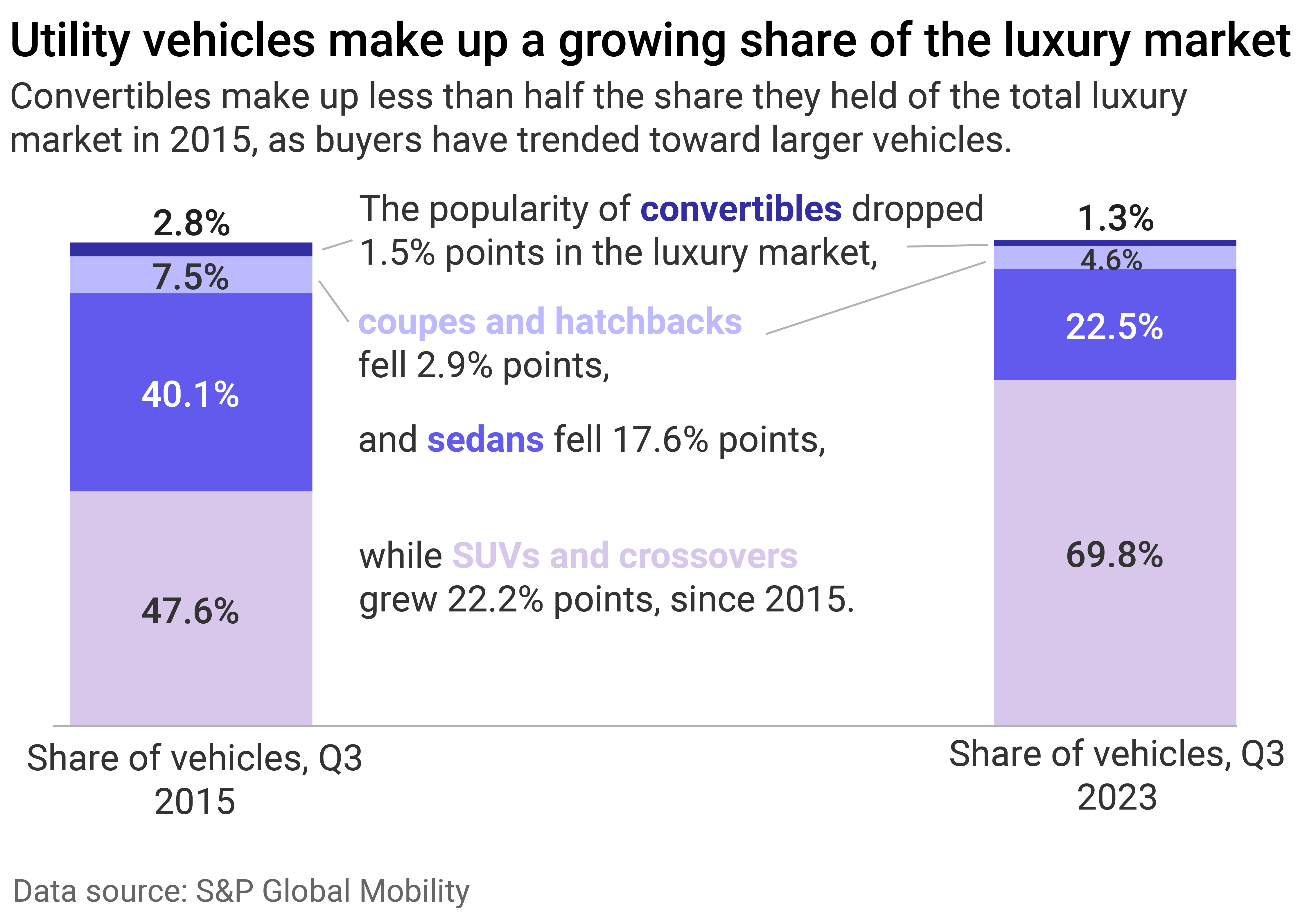John Keeble // Getty Images Something that was ubiquitous in the early age of the automobile is glaringly absent in the 21st-century electric vehicle frenzy: the almighty drop-top. In the early 1900s as the world transitioned from buggies to automobiles, the default car body featured a soft top or no roof at all. As engine technology machining techniques advanced, hard bodies proliferated as they were easier to manufacture and provided more safety on roads where drivers were keen on faster speeds. True convertible electric vehicles have been missing from manufacturers’ lineups even as sales of battery-powered vehicles set a record in the third quarter of 2023, growing 50% from the previous year, according to the latest data available from Cox Automotive. The General used data from S&P Global Mobility and news reports to explore why American consumers can’t find electric convertibles. For a number of brands serving North American markets, convertible models feel like aspirational additions to electric vehicle lineups that today mostly center around mid- and full-size SUV body shapes. Tesla has teased a potential Roadster model with a removable glass roof for years, but one has yet to come to market. Polestar teased a convertible concept for an electric sports car so well received that the company added it to its production lineup, with an anticipated release in 2026. U.K.-based automaker MG plans to begin selling an electric convertible sports car in summer 2024, but only in the U.K. and Europe. Genesis has shared a drop-top EV concept with no public plans to bring it to market. Volkswagen has pondered its own version of a convertible spin on its ID.3 EV line. Potentially the only convertible EV on the market in the U.S. today is from Fiat, which has said it will begin selling its all-electric version of the 500 in America this year. The car comes in a style that features a retractable roof, though it’s less of a full drop-top and more like a large sunroof. Rise of EVs coincides with falling popularity of convertibles The General In the late 1900s, convertibles landed in the luxury class of vehicles featuring sportier styles. By 2023, they made up just 1.3% of luxury vehicle sales, roughly half of what they were as recently as 2015, according to S&P Global Mobility data. They make up an even smaller portion of mainstream vehicle sales. That’s partly a continuation of the trend of American consumers demanding large trucks and SUVs instead of small vehicles like sedans and coupes. American auto manufacturers have shifted production to accommodate the demand by producing fewer of the latter. Even the EV models on the market that come closest to resembling a convertible are large utility vehicles like the Hummer EV with its removable modular roof. SUVs take over luxury market The General The luxury market convertibles reside in has seen consumer preferences swing toward larger vehicles, too. The size of many bestselling vehicles today could be another factor working against the future of convertibles. More SUVs, crossovers, and trucks are on the road than ever before. And the new EV versions are much heavier than their gasoline-powered counterparts, posing a greater safety threat on roads, research suggests. A National Bureau of Economic Research study found that being hit by a 1,000-lb.-heavier vehicle increases the chances of fatality for the driver of the struck vehicle by 47%. The open top of a convertible becomes a serious safety concern in any hypothetical rollover or collision with a combustion engine Chevy Suburban weighing in at 5,600 lbs., or worse, a Hummer EV that weighs 9,000 lbs. due to its extremely heavy battery. Story editing by Ashleigh Graf. Copy editing by Kristen Wegrzyn. This story originally appeared on The General and was produced and distributed in partnership with Stacker Studio.
Where are all the convertibles in the electric vehicle boom?










